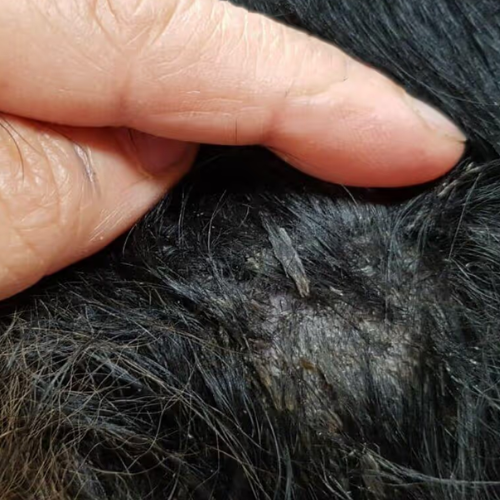Every canine possesses a pair of front and rear pasterns. The pastern is the lower part of the foreleg, just above the foot and below the wrist. Similarly, in the hind leg, the pastern is the portion located above the foot and below the heel (also known as the hock).

Actually, the pasterns act as shock absorbers. It is essential to remember that the dog’s forequarters bear more than half of the pup’s weight. While in the hind leg, the heel of the dog’s foot will make contact with the ground first, regardless of the gait. This heel is responsible for absorbing the impact’s shock. For these reasons, dogs’ feet have cushioned heels for the purpose of softening impacts. These pads, which are known as communal and digital pads, are located in the canine tarsus. They also have a set of tendons and levers in their feet and lower legs, which they use to propel themselves forward when running.
Common Dog Pastern Issues
Carpal subluxation is a frequent condition that manifests as a weak pastern and is named after the medical term. Although some argue that these two could be different conditions, it demands the same uttermost attention and action as if it were the case either way.
A dog in good condition should be able to stand up upright on its front legs, with the pasterns bending under the body’s weight just enough to provide the dog with the mobility it requires to walk, sprint, or jump at will.
Weak patterns will result in the dog laying its pasterns on the ground, similar to the way a person may put his forearms on a table. The only problem is that the dog won’t do it voluntarily!
There are four main reasons for weak pasterns in dogs:
- Genetic Issues
The majority of weak pasterns are due to genetic problems. In cases of genetic inheritance, weak pasterns are due to abnormal development of the bones, muscles, and ligaments, which can be passed down from generation to generation. Plus, If the cause is genetic (i.e., passed down from an ancestor with the same issue), the symptoms will appear over time.
The majority of weak pasterns are due to genetic problems. In cases of genetic inheritance, weak pasterns are due to abnormal development of the bones, muscles, and ligaments, which can be passed down from generation to generation. Plus, If the cause is genetic (i.e., passed down from an ancestor with the same issue), the symptoms will appear over time.
- Traumatic conditions/Injury
Trauma/Injury usually causes weak pasterns. If the condition is traumatic, which means it was caused by an event such as a fall or another incident, the symptoms will suddenly present themselves. In such a scenario, one of the animal’s forelegs can be more severely injured than the other. Because of this, quick medical intervention is required.
- Inadequate Nutrition
A diet consisting of low-quality foods might cause your dog to have weak pasterns. If you do not feed your dog a diet that is well-balanced and has the necessary proportions of protein, fat, carbohydrates, calcium, and vitamins, then your dog will suffer from several ailments in addition to a decrease in the strength of its pasterns.
- Joint disorders
Weak patterns can also be caused by disorders of the joint that are connected to the immune system. Or, it might be a physical deformity; in that case, it should be treated with the same significance level as any other physical abnormality.
A dog may develop weak pasterns for the reasons that have been discussed above. The dog will experience more stress, pain, and discomfort and make more effort than usual as a result of this, and will tire out more quickly due to their normal activities, which include running and playing. If your beloved pet is exposed to this condition for an extended period of time without receiving treatment, there is a possibility that it can cause permanent bone damage.
Once you have established that your dog’s pastern is weaker than normal, the next step is to figure out the reason why. After that, you will be able to proceed to the treatment session for your dog’s weak pastern. Your dog can recover from weak pasterns quickly if treated with the appropriate diet and exercise regimen.
How to Treat Weak Dog Pasterns?
You can do the following to treat weak pasterns in your canine companion.

- Provide proper diet
When your dog is ill or suffering from any other health condition, we tend to overfeed them because we believe that if the dog eats appropriately, he will get better quickly. If the dog puts on too much weight, this will lead to other health problems, including weak pasterns. If you desire your dog to live a long and healthy life, providing it with the right food is essential. Most of the time, low pasterns may be avoided by providing the dog with an adequately nutritious diet. It is imperative that you offer pups that are developing quickly high-quality dog food that is formulated for big breeds.
- Provide proper supplement
The second consideration is that you must exercise extreme caution before providing your dog with any more nutritional supplements. Back then, people believed that taking dietary supplements like calcium would protect horses from developing weak pasterns.
However, later on, veterinarians found out that calcium makes the issue worse when given in this manner. They no longer endorse it.
Vitamin C is the easiest dietary supplement to take for weak pasterns. Because it maintains the strength of collagen, vitamin C benefits the joints and the connective tissues. In addition, canine immune systems can be strengthened by supplementation with vitamin C. It is the ideal supplement to help your dog recuperate from the effects of any stressors.
- Provide appropriate exercise
It is imperative that dogs get the appropriate amount of activity in order for them to recoup from weak pasterns.
One possible cause of low pasterns is having a lot of muscle. On the other side, over-exercising or exercising your dog for an extended amount of time can also be detrimental to its health. A puppy can have weak pasterns if they are subjected to excessive exercise at an early age. Dogs with weak pasterns become exhausted extremely quickly, and it is more probable they may damage themselves when leaping. If he starts to feel fatigued, you should let him rest and limit the amount of time he spends playing, walking, or exercising.
Precautions for exercising
Dogs should not exert themselves to the point of exhaustion. Going for walks on smooth, level surfaces that don’t offer much resistance might be another option. Walking on surfaces prone to slipping can put unnecessary strain on a young puppy’s growing muscles and joints. You should ensure that your dog gets its exercise on a surface with the appropriate amount of friction.
Other problems with the pastern may be brought on by rapid bone development. Canines of larger breeds are more likely to have issues with their bones. Because of this, you need to exercise caution whenever you have one (or more!).
Conclusion
In order to strengthen your weak pasterns, you need to ensure that your canine has a healthy diet, takes its vitamins, and exercises regularly. It is essential to begin providing proper care for your canine companion at an early age. The problem with the pastern might become severe if action is not taken. Nutritional supplements must be used while being monitored by a veterinarian.

Doctor of Veterinary Medicine (D.V.M.) at Nation Taiwan University,Master of Science (M.S.) in Biomedical Engineering at National Taiwan University of Science and Technology




